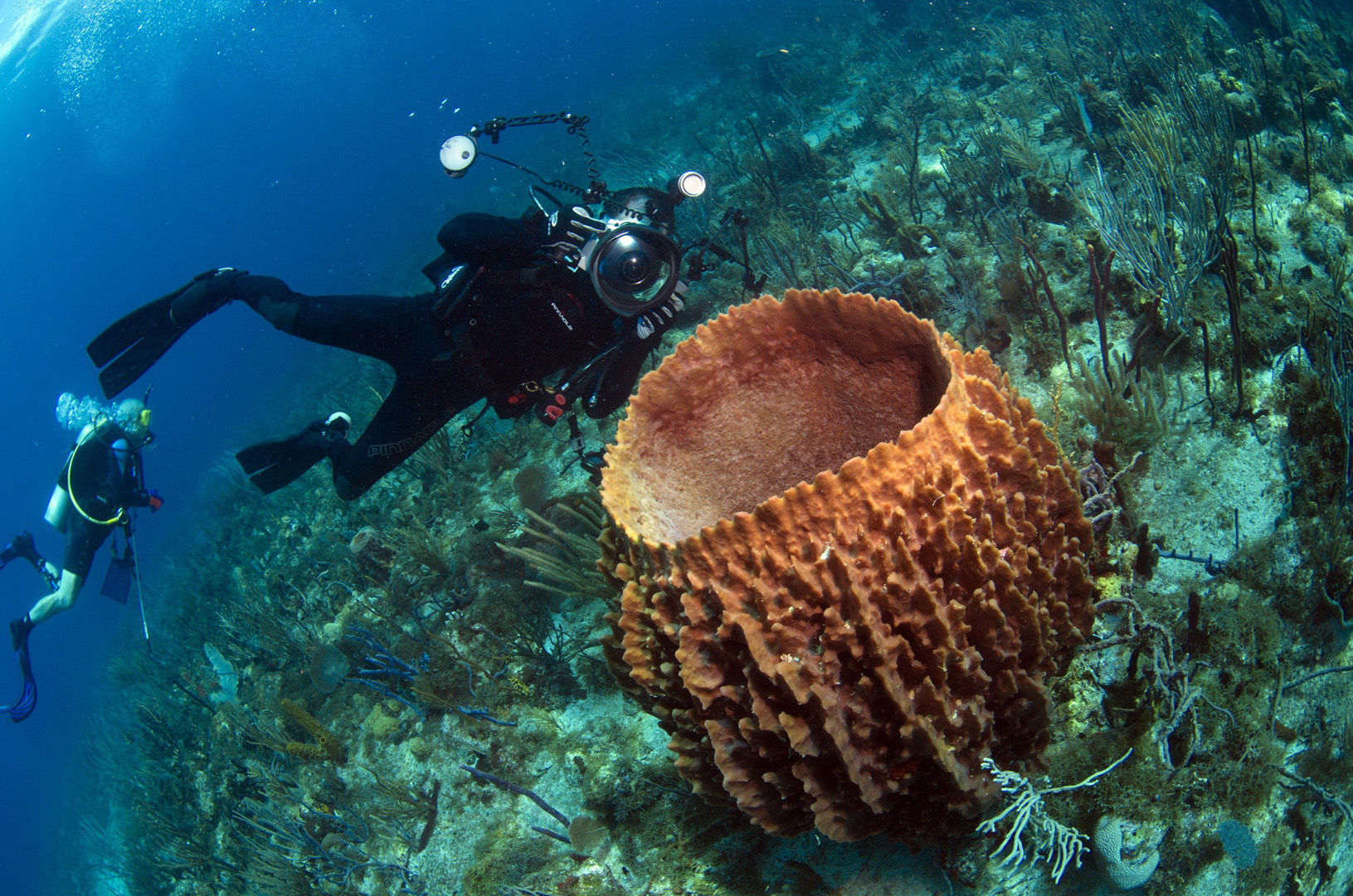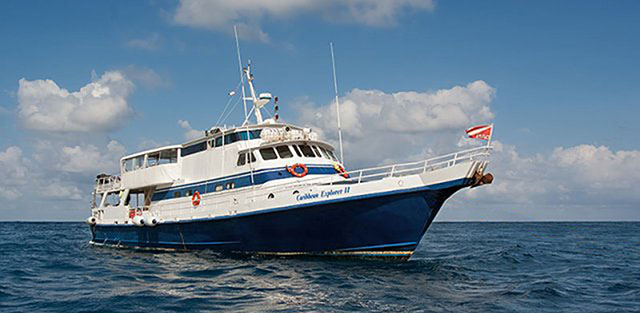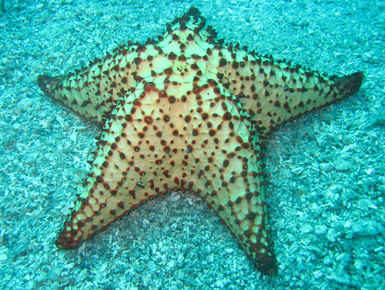
Reefs and Wrecks for All
In the past, the two-island nation of St. Kitts and Nevis were not well-known in scuba circles. But as a growing number of travelers discover this destination, reefs and wrecks once rarely visited are now regularly accessed by both local operators and liveaboard. The underwater landscape delivers a full spectrum of Caribbean diving experiences, with clear water, minimal currents and both reefs and shipwrecks that are accessible to all divers. Challenging profiles and exploratory-style trips to more distant locations are also available, but for most, the rewards are easy to access and generous bottom times on reefs that are home to a wide range of tropical marine life.
Highlights
- Best for: All divers
- Best season to visit: Year round for most sites, summer for exposed Atlantic dives
- Weather: Steady trade winds account for relatively minor differences in seasonal air temperatures, which range from the 70s into the mid 80s. Rain showers are less common from December to May
Things to Do
St. Kitts & Nevis Information
About Diving in St. Kitts & Nevis
Coral reefs ring both islands, but the majority of diving activity takes place on the western side of the islands in the calm Caribbean water. Reef slopes vary from moderate to steep and often include undercuts, caverns and canyons. A lesser number of sites feature sections of vertical walls or volcanic ridges. Most all support both hard and soft corals, and many popular sites along the island's southwest coast lie within a marine protected area. St. Kitts is noted for a number of interesting shipwrecks located close to shore in relatively shallow water.
Diving in St. Kitts & Nevis Tips
Divers looking to nitrogen load can get their fix on deeper reefs and walls, but the majority of sites—including the wrecks—sit at accommodating middle depths that allow for longer bottom times. With the luxury of time, divers are able to dawdle and discover the small details of reef life.
Best Places to Dive in St. Kitts & Nevis
Wrecks such as the River Taw and MV Talata sit at depths accessible to all divers. At Brimstone Shallows, a deep cleft in the wall leads divers on a downward spiral to an expansive coral-rimmed amphitheater. Colorful crustaceans hide among bus-sized boulders at Nags Head while rays and pelagics cruise the currents above. The expansive coral-covered slopes of Coconut Tree are ideal for multi-level profiles and Green Point provides a relaxing drift in moderate currents. When weather permits, adventurous divers can explore less-visited sites on the island's east coast such as Aquarium, or venture to the offshore plateau of Monkey Shoals.
What to Pack for Diving in St. Kitts & Nevis
A 3mm wetsuit is all most divers will require. Conditions on most sites are suitable for a lower volume travel BC and compact fins, freeing up luggage space for a pair of hiking boots.
Liveaboards

St Kitts & Nevis
Caribbean Explorer II
Call 800-330-6611 for Pricing, Information and Availability.
Call 800-330-6611 for Special Pricing and Information.
See Packages & Learn MoreDiving in St. Kitts & Nevis
Drop into the water at most any point along the coasts of St. Kitts or Nevis and you will likely find coral growing on volcanic slopes that range from gentle slopes to steep drops. There are more than 60 square miles of fringing and deep reefs surrounding the islands, and thanks to historically light diver traffic, there are many areas that are rarely visited or even unexplored. That said most diving activity remains focused along their west coasts, and especially the area to the southwest, near St. Kitts' capital of Basseterre, here, more than two-dozen sites within an easy boat ride of dive shops provide a diverse range of underwater topographies, along with a number of modern shipwrecks. A favorite wreck is the MV River Taw, a 144-foot freighter that sank in a depth of 50 feet less than a mile from shore. Now broken open, the superstructure is heavily encrusted in coral, and the wreck is a favorite with fish watchers and photographers. Sea turtles, angelfish and queen triggerfish make lazy passes around the upper decks, while the sands near the keep hide squirrelfish, purple mouth morays, flying gurnards and—for the keen-eyed observer, a population of seahorses. The shadowed recesses of the bow hold three species of black corals usually seen only in deeper water. Both of these ships are considered excellent night dives. Not far away, the Talata is another island freighter that sank in 1985 while at anchor. It's battered profile rises from 65 feet to 35 feet, attracting schools of glass-eyed snappers and black bar soldierfish. Near the vessel's keel, divers can find thermal vents that radiate heated water from deep underground. The third wreck in this area, the Corinthian, is fully intact 60-foot tugboat resting at a depth of 65 feet on a sandy bottom. After exploring the wreck, and taking in the colonies of garden eels in the surrounding sands, divers can extend their bottom time by moving to an adjacent reef that rises to 35 feet. Several smaller wrecks sit in even shallower water, including a tugboat at a depth of 20 feet that both divers and snorkelers can enjoy. Reef dives are conducted at depths from 35 feet to beyond 100, and the mid-level to deeper reefs typically hold the most coral cover and fish life. In addition to the southern sites, dive operators will sometimes visit reef systems on the island's westernmost coast, which is known for having excellent water clarity. Two favorite areas are Paradise Reef and Sandy Point. Both offer dense growths of brain and star coral, with slopes and walls that drop well past 100 feet, and include volcanic formations such as clefts and ridges that add interest to the terrain. Another area often visited is the broad seamount known as Monkey Shoals, which sits several miles west of the island. This structure rises to within 45 feet of the surface and supports dense growths of both hard and soft corals. More challenging dive sites are located along the channel that separates St. Kitts and Nevis. At Nags Head and Booby High Shoals, currents bring larger fish and the best chance of seeing sharks. The island of Nevis offers a number of reefs that are similar in nature to those of St. Kitts, along with two unique sites: the Devil's Cave and the historic remains of the HMS Solebay, a 28-gun frigate that sank during the battle in 1782.
Passport and/or Visa Requirements
Entry/Exit Requirements: A valid passport is required which must be valid for 6 months beyond the date of entry into the country. Proof of onward or returning ticket is required, as well as 1 blank page in your passport for the entry stamp. No visa is required for U.S. Citizens for stays less than 90 days. All persons leaving, pay a Government Departure Tax of $22.00 U.S.
Immunizations
Vaccinations are not required for entry into St. Kitts. Check with your doctor and the Centers for Disease Control on recommended vaccinations for travel at cdc.gov.
Culture and Customs
Long after other islands in the Caribbean turned to tourism, St. Kitts was an island of farmers. Sugarcane remained the island's chief economic driver through the end of the 20th century, and it wasn't until 2005 that government and private sectors made a concerted effort to welcome tourism and development. Fast-forward a decade and the island is experiencing robust resort and residential growth that includes a number of premier resorts and a tasty collection of new restaurants. But the newfound prosperity that has accompanied this transition hasn't resulted in urban sprawl or a loss of cultural roots. Having established some of the most broad-reaching conservation measures of any island in the Caribbean, more than a quarter of St. Kitts is now protected land. The mountainous interior of the island is covered in one of the rarest types of forest on earth: the American Oceanic Rainforest. And this forest continues to expand as fields no longer used for cane cultivation return to nature. Miles of trails wind through old-growth forests and up mountain slopes for rewarding views of the entire island. If hiking and birding are not your things, there's golf, spas and lively beach clubs. Modern beats fill downtown dance clubs, but across the islands, calypso music is still king—especially during the eight-week winter celebration known as Sugar Mas, which blends the spirit of the Christmas season with elements of Carnival, and colorful displays of the island's cultural traditions and African heritage.
Electricity, Phone and Internet Access
Electricity in St. Kitts is 230 volts, 60 cycle, however, 110 volt supply is available at some hotels. An adapter may be needed for U.S. visitors. The country/area code for St. Kitts is 869. There are a few service providers in St. Kitts and Nevis so please check with your local provider to see what plans are available or roaming charges will apply. Many hotels offer WiFi.
Water Quality
Drinking water is pure and safe to drink. Bottled water is sold in stores, hotels and restaurants if preferred.
Language & Currency
English is the official language. The local currency is the Eastern Caribbean Dollar (XCD or EC$). U.S. Dollars are accepted but normally change is given in EC$. ATMs are available as well which dispense EC$. Check the current exchange rate here.
Time
St. Kitts is on Atlantic Standard Time (AST) and does not observe Daylight Savings Time. St Kitts is 4 hours behind Greenwich Mean Time (-4 GMT).
Location, Size and Population
St. Kitts and Nevis are located in the Eastern Caribbean in the West Indies. The West side of St. Kitts faces the Caribbean Sea, while the East side of St. Kitts faces the Atlantic Ocean. Nevis & St. Kitts from one country, the Federation of Saint Kitts and Nevis which share approximately 100 square miles in total, Nevis with 35 square miles and St. Kitts with 65 square miles. St Kitts is 5 miles wide by 18 miles long. The two islands are separated by a 2-mile channel known as The Narrows.
The population of St. Kitts and Nevis combined is 55,712 (2016) with approximately 12,000 residing on Nevis.

